Mapping and modeling attributes of an Arctic-Boreal biome shift
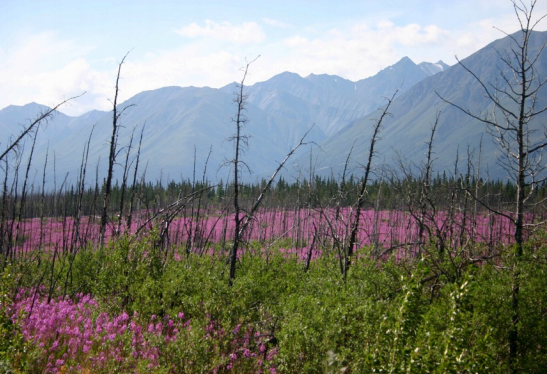
Lead
Scott Goetz
Keywords
Arctic tundra, boreal forest, remote sensing, climate change, modeling, vegetation, mapping, shrub, lichen
This project, part of the Arctic Boreal Vulnerability Experiment (ABoVE), is designed to assess the evidence for vegetation changes and transitions consistent with expectations of a biome shift resulting from changing climate in the high latitudes of North America. We are investigating the implications of such a shift on both flora and fauna, and exploring options for resource management adaptation to change.
This project is part of ABoVE. More information about this project can be found here.
Determining the vulnerability and resilience of boreal forests and shrubs across Northwestern North America
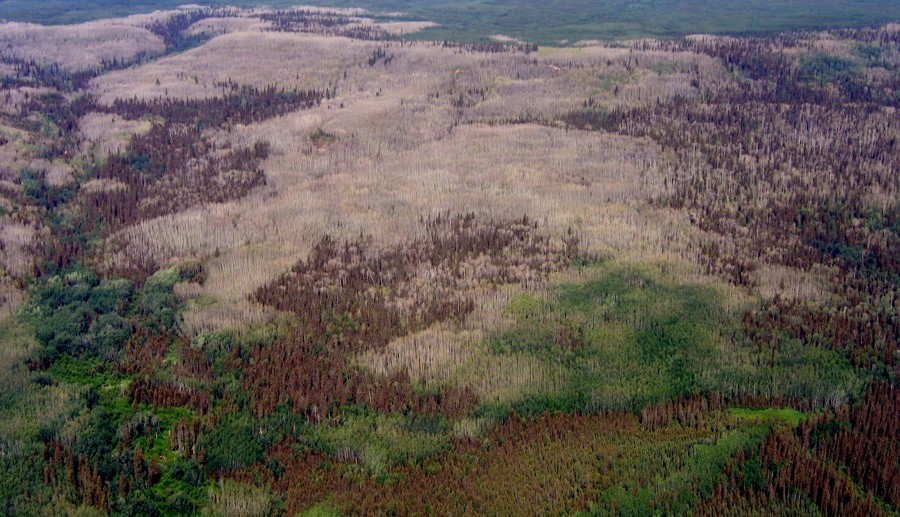
Lead
Rosanne D’Arrigo (Lamont Doherty Earth Observatory)
co-lead
Scott Goetz
Keywords
Vulnerability, resilience, remote sensing, tree-ring studies, greening, browning, biome shift
This project’s integration of remote sensing and tree-ring studies of vegetation will yield a comprehensive assessment of the impact of climatic and environmental change on tree and shrub growth across the taiga and tundra ecosystems of northwestern North America, provide insight into their vulnerability and resilience, and allow inferences to be made on how they are likely to be altered in the future. Tree and shrub growth in the Arctic is important because it regulates climate through a range of feedback mechanisms that are not only complex but also rapidly changing with climate warming.
This project is funded by NSF’s Arctic Natural Sciences program and is affiliated with ABoVE. More information about this project can be found here.
Understanding the causes and implications of enhanced seasonal CO2 exchange in Boreal and Arctic ecosystems

Lead
Brendan Rogers
co-lead
Scott Goetz
Keywords
CO2 flux, climate change, productivity, respiration, process model, boreal, arctic
During the last half century, the magnitude of seasonal variability in CO2 exchange has increased by 30-50% in high latitude environments, with two thirds of this change attributed to increased CO2 flux in boreal forest and arctic tundra. Mechanisms for this change have been identified but the relative contributions of each of these mechanisms are not well understood. Given that these increases in seasonal CO2 flux impact carbon cycling and climate feedback in boreal forest and tundra ecosystems, it is important to fully understand the underlying mechanisms.
This project is funded by the NASA Carbon Cycle and Ecosystems Project and is affiliated with ABoVE. More information about this project can be found here.
Regional quantitative cover mapping of Tundra plant functional types in Arctic Alaska
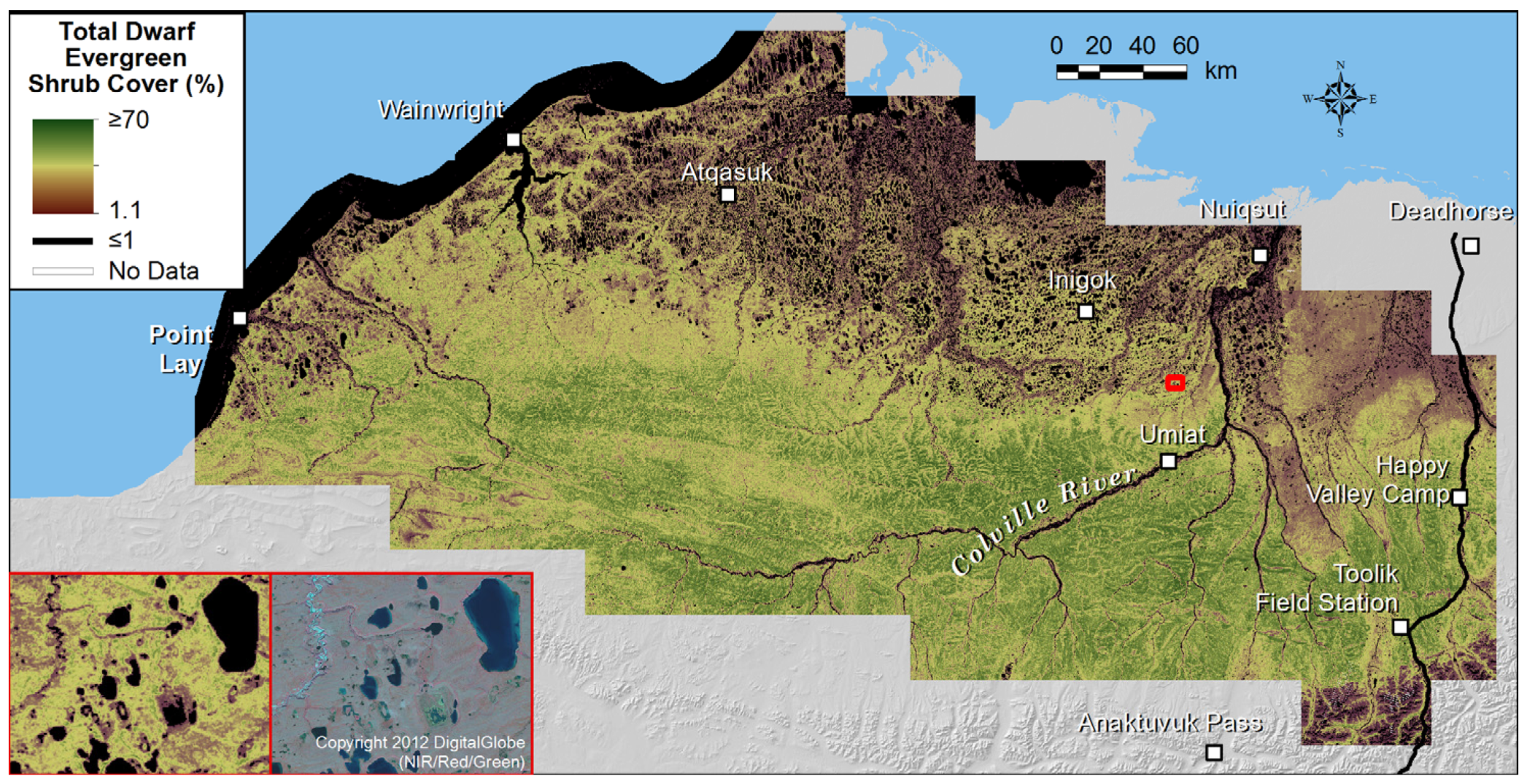
lead
Scott Goetz, Matt Macander (Alaska Biological Research, Inc.)
keywords
Plant functional types, arctic, tundra, remote sensing, continuous mapping, random forest, machine learning
Ecosystem maps are foundational tools that support multi-disciplinary study design and applications including wildlife habitat assessment, monitoring and Earth-system modeling. We have created continuous-field cover maps for tundra plant functional types (PFTs) across Alaska’s North Slope at 30-m resolution, and are now working to expand this mapping across Alaska and Northwest Canada. Maps are developed using field-based training data at plots spanning bioclimatic and geomorphic gradients, spectral predictors derived from Landsat satellite observations and gridded environmental predictors. PFT cover is modeled using the random forest data-mining algorithm. Continuous-field maps have many advantages over traditional thematic maps, and our methods are well-suited to support periodic map updates in tandem with future field and Landsat observations.
Read more about this research here.
Tundra plant above-ground biomass and shrub dominance mapping across the North Slope of Alaska
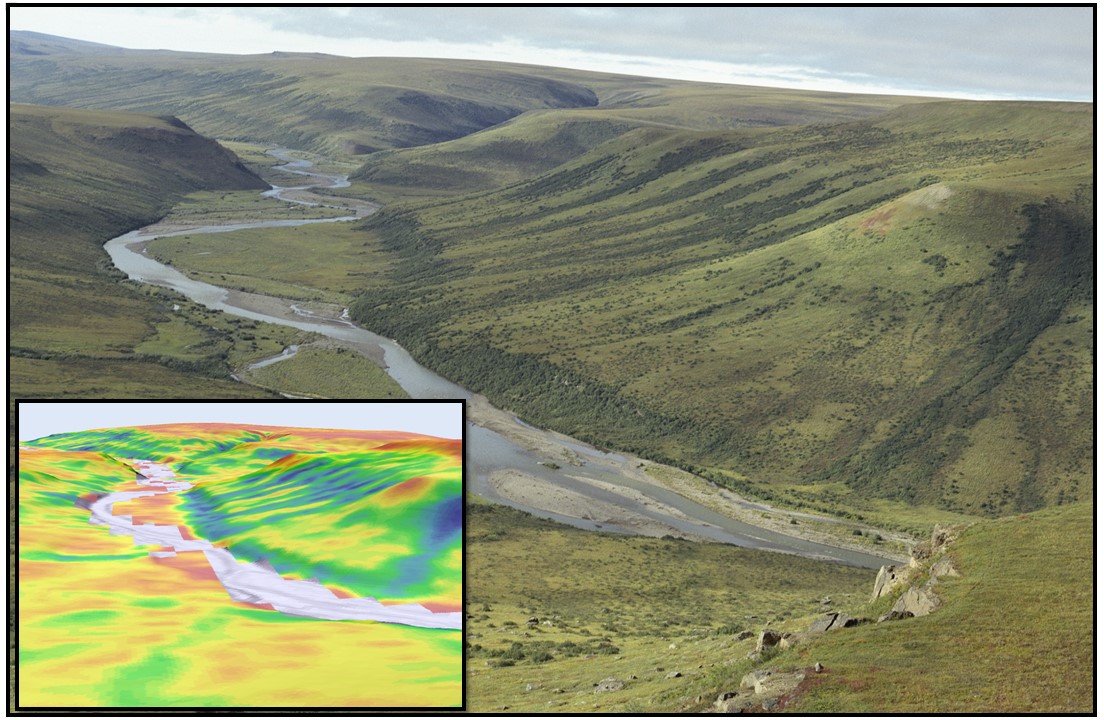
Lead
Logan Berner
Keywords
Above-ground biomass, tundra, Landsat, shrub dominance, Arctic greening, shrub expansion, remote sensing
Arctic tundra is becoming greener and shrubbier due to recent warming. This is impacting climate feedbacks and wildlife, yet the spatial distribution of plant biomass in tundra ecosystems is uncertain. We have mapped plant and shrub above-ground biomass (AGB; kg m−2) and shrub dominance (%; shrub AGB/plant AGB) across the North Slope of Alaska by linking biomass harvests with 30 m resolution Landsat satellite imagery. We are now working to expand these techniques spatially across tundra regions of Alaska and Northwest Canada, and taxonomically to other plant functional types (PFTs).
Details about this research and our modeling approach can be found here.
Remotely based determination of key drivers influencing movements and habitat selection of highly mobile fauna throughout the ABoVE study domain
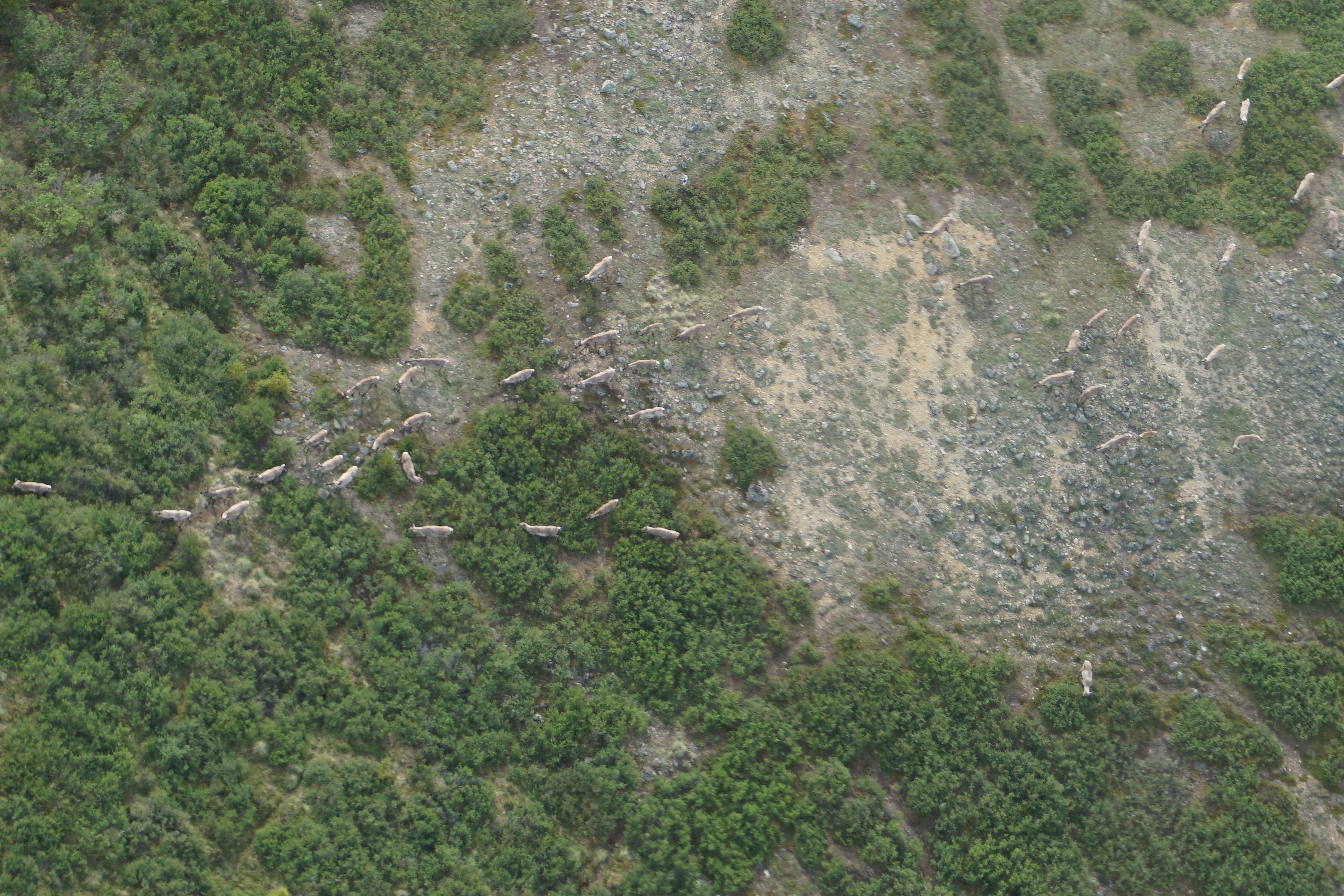
lead
Natalie Boelman
nau contributor
Katie Orndahl
Keywords
Wildlife movement, habitat selection, caribou, passerine, raptors, ungulates, predators, trophic systems, arctic, boreal
Fortymile caribou herd habitat relationships
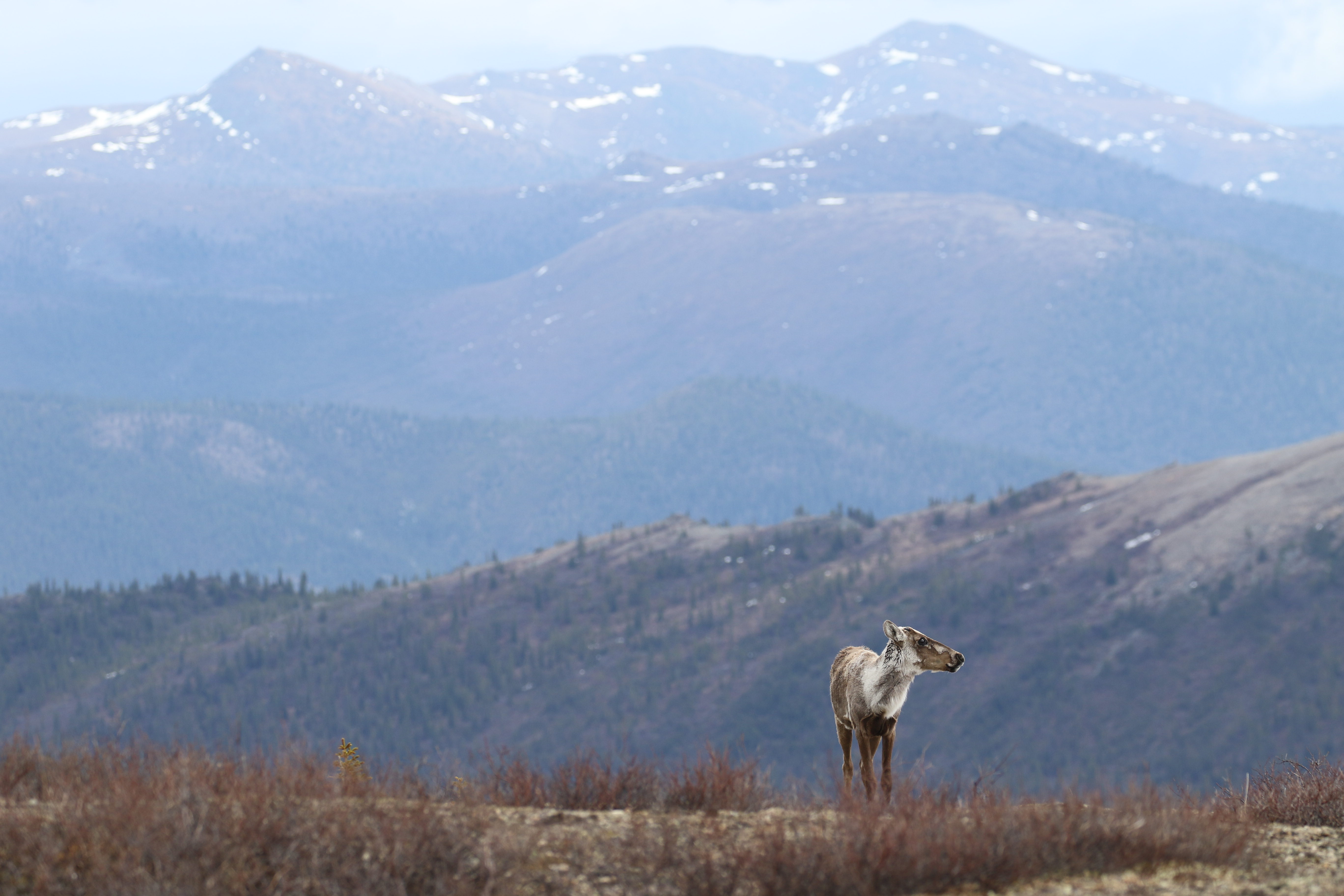
Image credit: Libby Ehlers/Jim Herriges
lead
Mark Hebblewhite
nau contributor
Katie Orndahl
Keywords
Resource selection functions, habitat selection, caribou, unmanned aerial vehicles, biomass mapping, overgrazing, herbivory, arctic, boreal
Caribou and vegetation structure in a warming Arctic
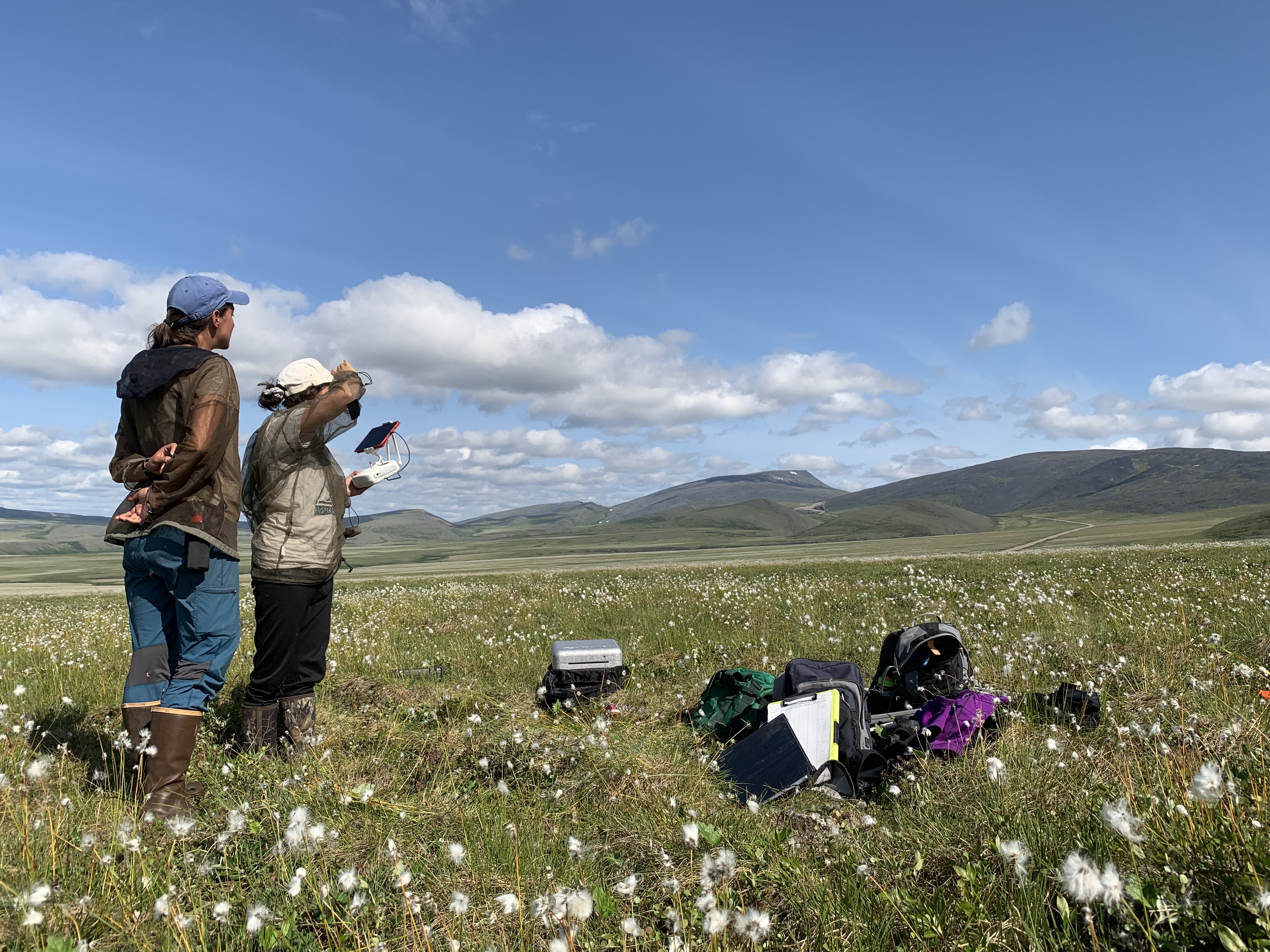
nau contributor
Katie Orndahl
Keywords
Caribou, unmanned aerial vehicles, biomass mapping, herbivory, carbon cycle, arctic, tundra
Arctic regions are experiencing some of the fastest rates of climate warming in the world. These regions are poised for significant changes in vegetation composition and structure, which in turn affect carbon cycling. Vegetation and carbon cycle changes have the potential to impact one of the region’s most ecologically, culturally, and economically important species: barren-ground caribou. In addition, caribou have the potential to affect tundra vegetation, creating complicated interactions among herbivore assemblages, climate, and vegetation structure and function. Of particular importance is the potential of caribou to impact ecosystem responses to climate change.
As one of only two large herbivores present in the North American Arctic, caribou play an important role in shaping future Arctic climate and vegetation communities. They will also be acutely affected by changes in climate and vegetation. To understand these interactions, and make accurate predictions about Arctic response to climate change, it is important to both quantify these effects, and explicitly include herbivory in models of Arctic climate and carbon – to “animate” the carbon cycle.
Our work seeks to bridge the gap between small-scale experimental research on arctic herbivore-vegetation interactions, and coarse spatial resolution remote sensing efforts examining these same impacts. We are using a combination of field data, UAV imagery, airborne imagery and satellite imagery to quantifying plant functional type biomass at 30 m resolution across barren-ground caribou ranges in Arctic Alaska and Northwest Canada. Products such as these can be used in conjunction with caribou location data to assess caribou-vegetation interactions.
Developing a gap-free digital surface model for Arctic and Boreal North America

lead
Patrick Burns
Keywords
Digital surface model, topographic mapping, arctic, boreal
Increasing fire severity and the loss of legacy carbon from forest and tundra ecosystems of northwestern North America
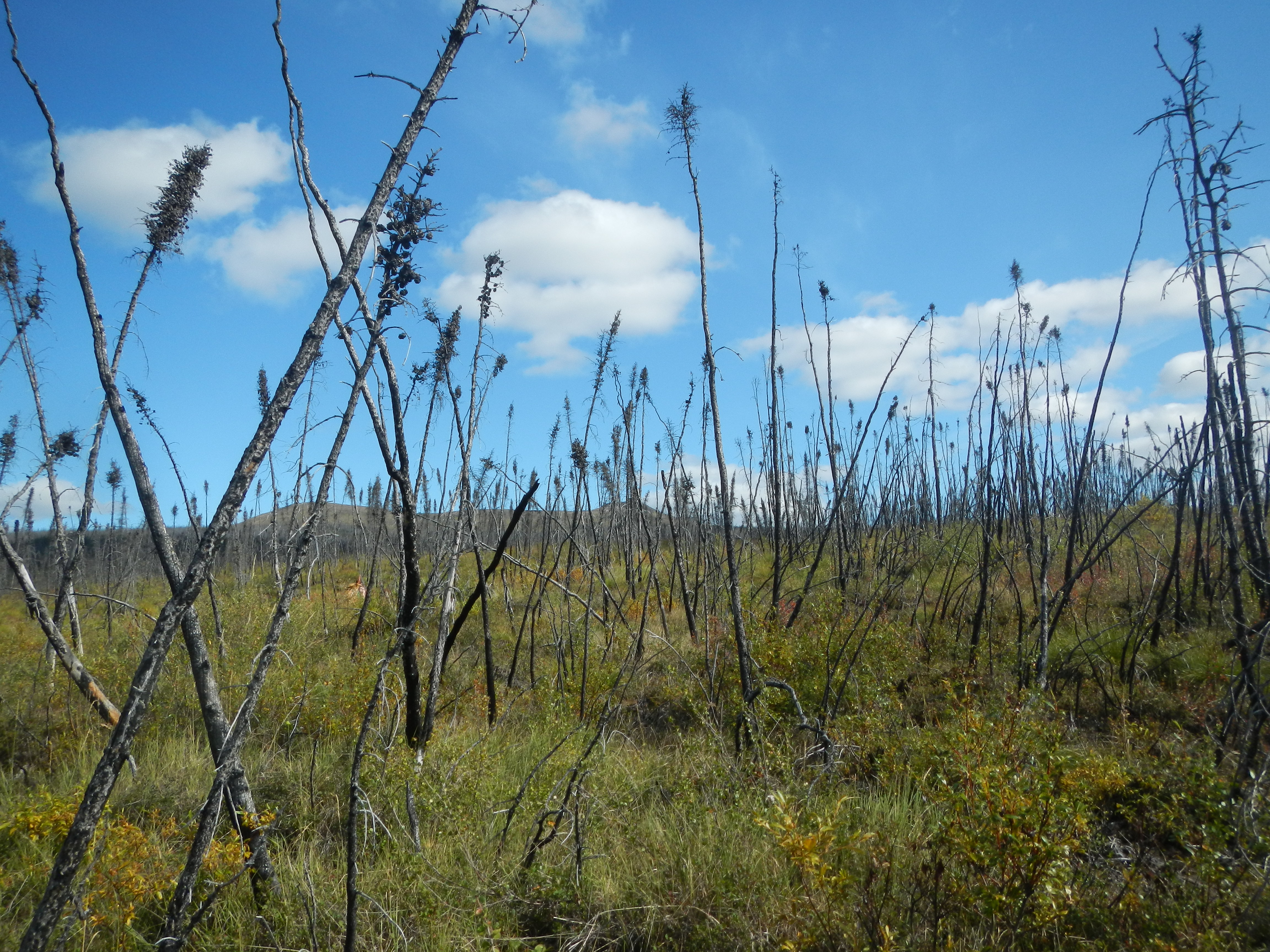
Lead
Michelle Mack (NAU)
Co-Lead
Scott Goetz
Keywords
Legacy carbon, climate change, fire, soil organic layer, carbon cycle, permafrost
Climate warming is resulting in increased fire frequency, extent and severity at northern latitudes. A significant amount of organic carbon in Arctic and boreal regions is stored in the soil organic layer, and thus carbon released from wildfires as a result of soil organic layer combustion is an important component of the Arctic-boreal ecosystem carbon balance. Of particular importance is “legacy carbon” – soil organic layer carbon pools that have survived previous fires. Combustion of this legacy carbon has the potential to cause a dramatic shift in Arctic-boreal carbon cycling – from a net sink, to a net source. We are identifying ecosystem, landscape and regional factors that control legacy carbon consumption. This will allow us to assess the effect loss of legacy carbon has on permafrost, soil drainage, carbon cycling, and post fire vegetation recovery.
For more information on this project, see Dr. Mack’s website.
Climate as a driver of shrub expansion and tundra greening
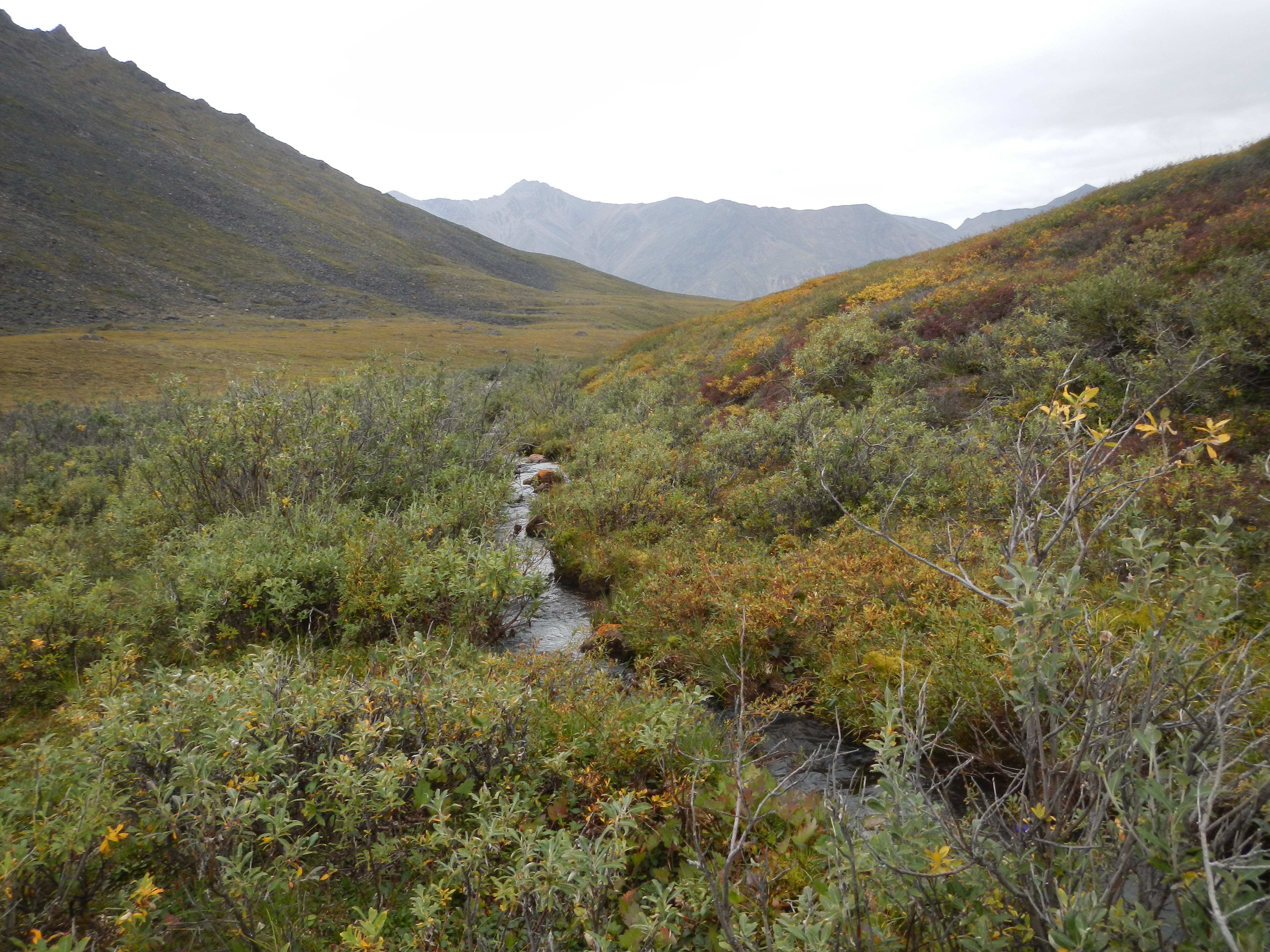
Lead
Isla Meyers-Smith (University of Edinburgh)
Co-Lead
Scott Goetz
Keywords
Shrub expansion, climate change, arctic greening, plant productivity, remote sensing
Global warming is happening faster at the poles than anywhere else on Earth. This has implications for vegetation dynamics in arctic tundra. Research has noted trends of increasing plant productivity and biomass, dubbed arctic “greening.” Shrubs in particular appear to be expanding in arctic systems. Shrubs are an important part of the Arctic carbon cycle and major contributors to feedbacks facilitating high-latitude climate warming. Our goal is to quantify the role of climate in arctic “greening” and shrub expansion. We are combining field data and remotely-sensed imagery (drone and satellite based) to quantify the strength of climate drivers on shrub expansion, and the rate and extent of shrub expansion.
For more information on this project, see here and here.
Winter respiration in the Arctic: Constraining current and future estimates of CO2 emissions during the non-growing season

Credit: Sarah Ludwig, Sue Natali, John Schade
Lead
Susan Natali (Woods Hole Research Center)
Co-Lead
Scott Goetz
Keywords
Winter respiration, CO2 emissions, climate change, remote sensing, CO2 flux
Air temperatures in the Arctic have increased at approximately twice the global rate, with the greatest warming occurring during the winter months. This increase in winter temperature might lead to permafrost thaw, increased winter microbial respiration, and thus increased release of CO2 to the atmosphere. Non-growing season (winter, fall and spring) CO2 emissions are therefore an important aspect of annual CO2 emissions, but current estimates of non-growing season CO2 have large associated uncertainties. We are using site level CO2 flux measurements, along with satellite remote sensing data, to measure winter respiration and produce regional estimates of CO2 emissions during the non-growing season. These improved estimates will allow us to better understand carbon flux in Arctic regions.
More information about this project can be found here.

